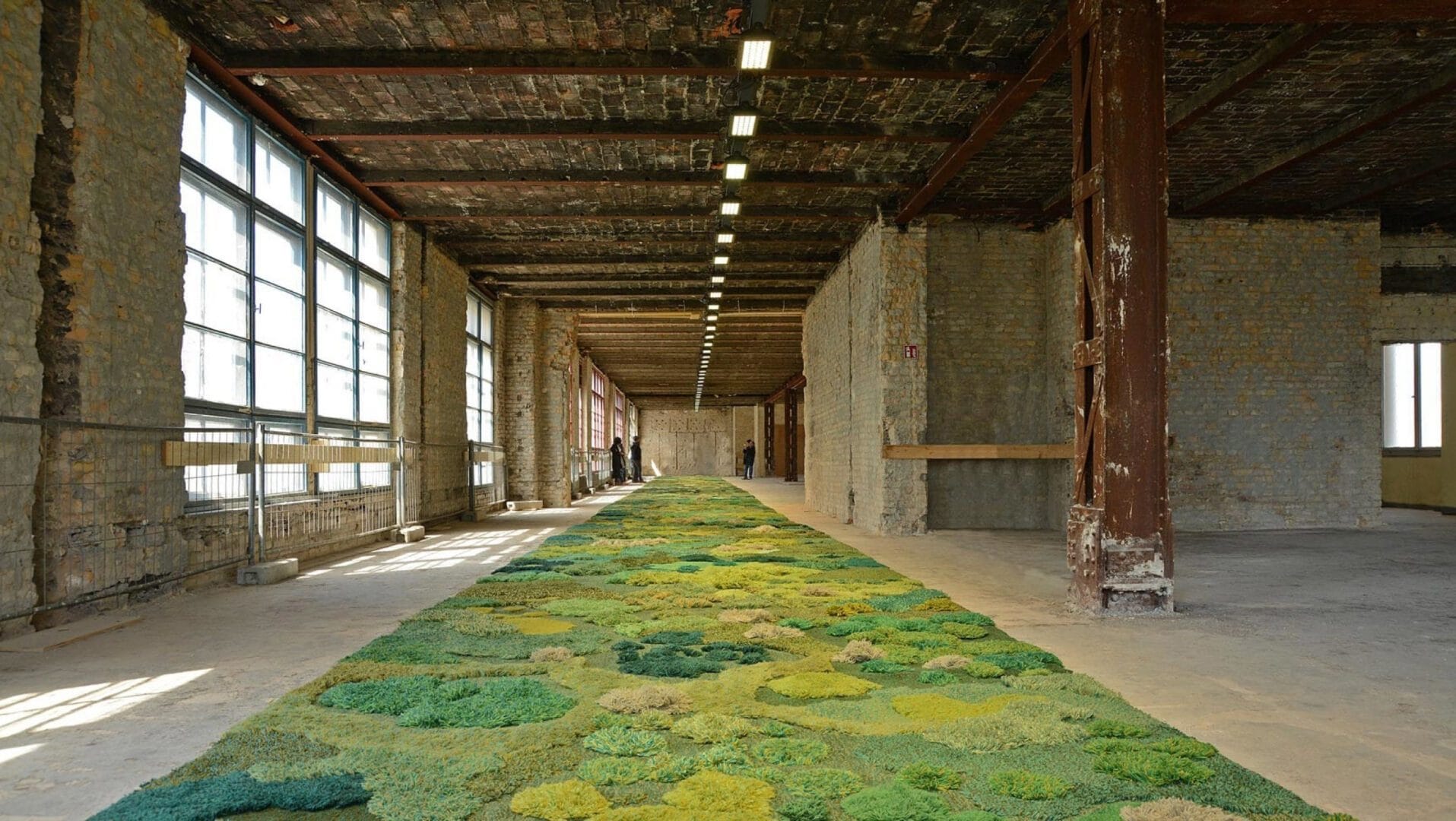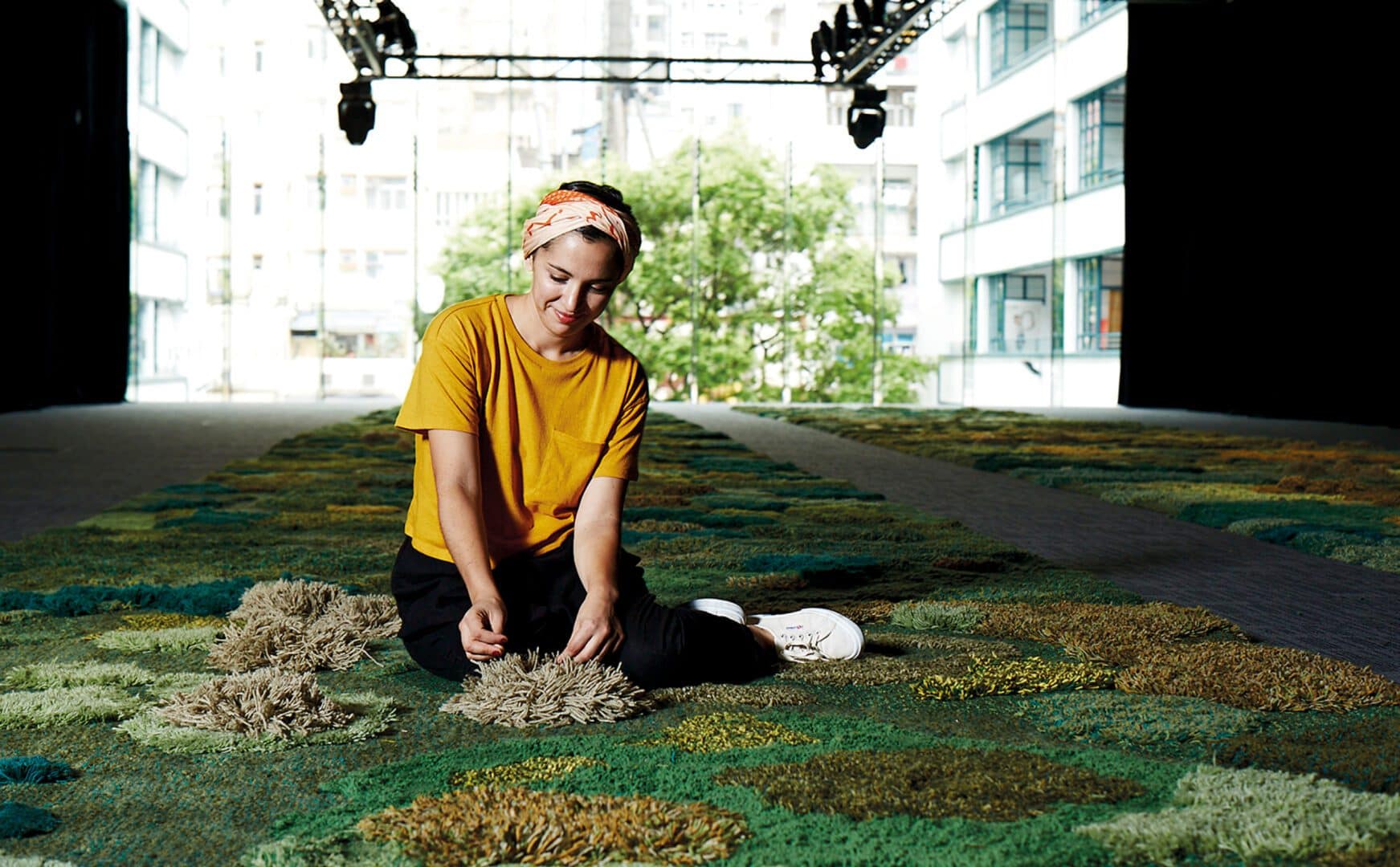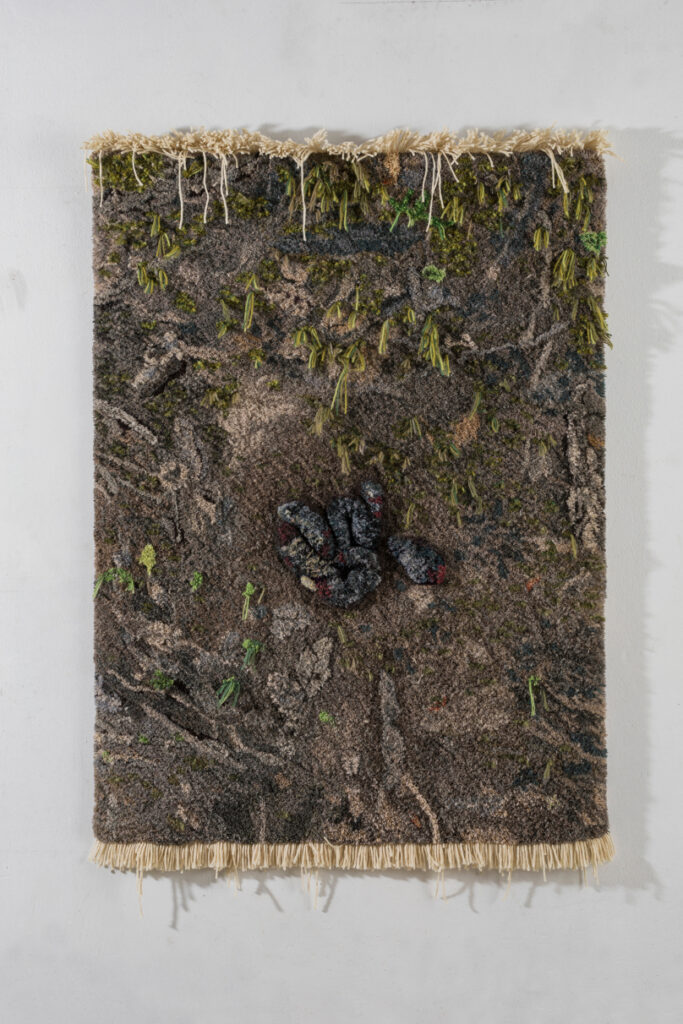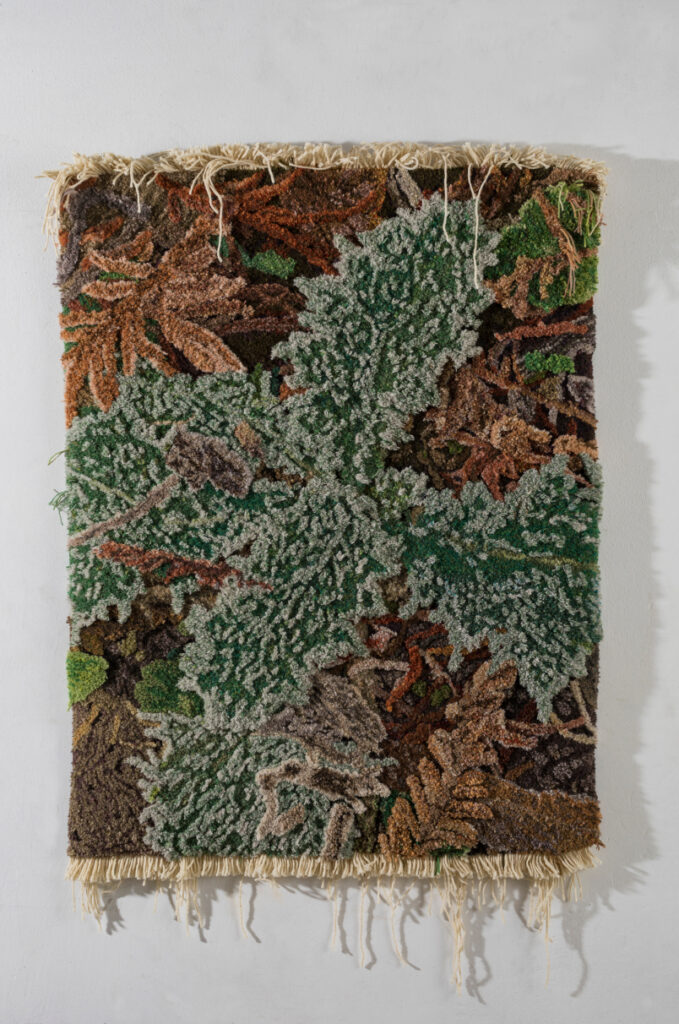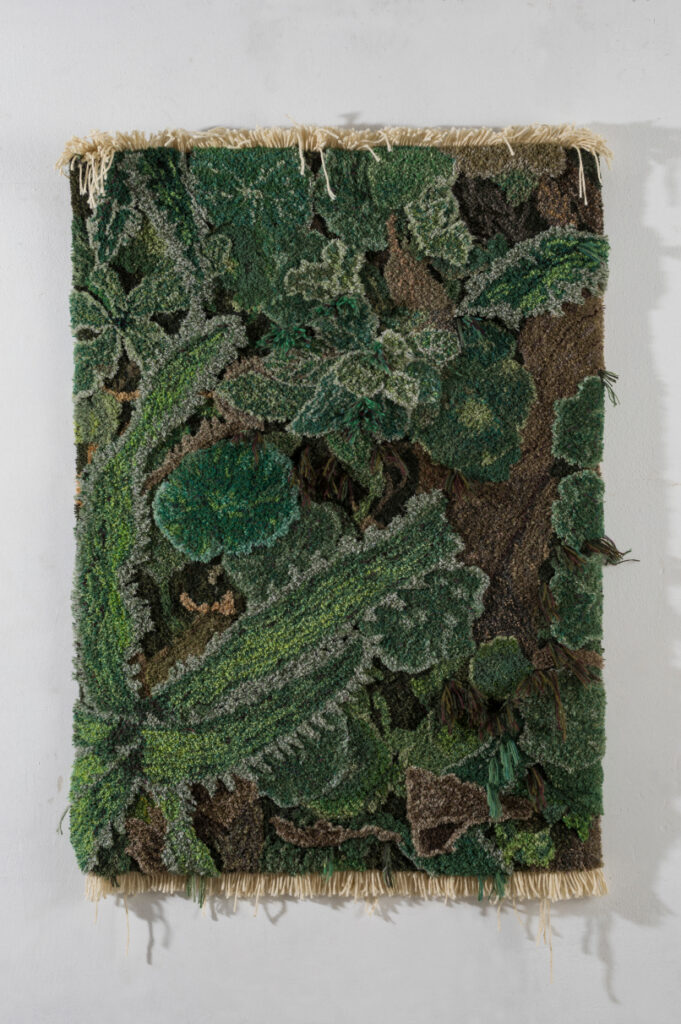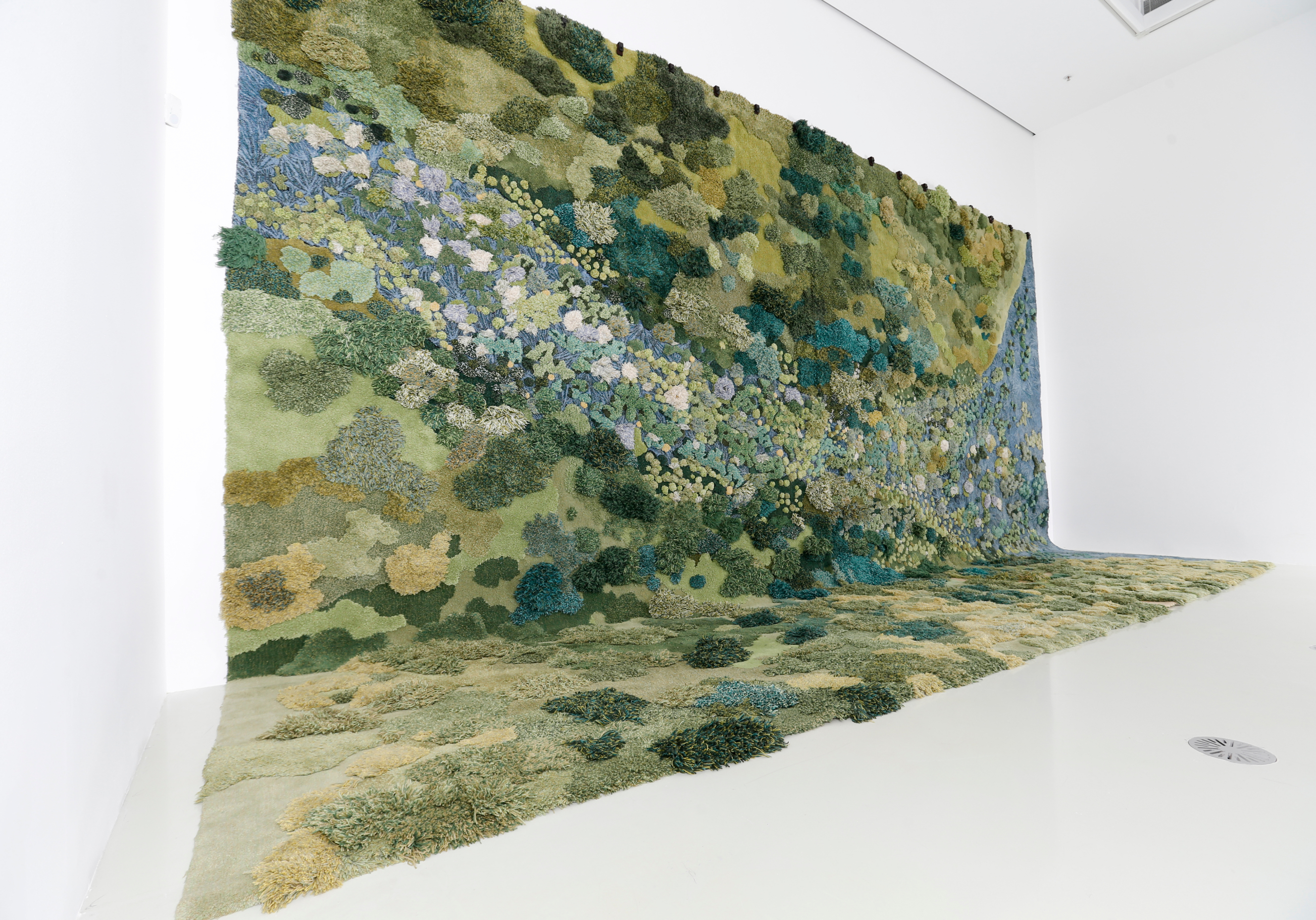
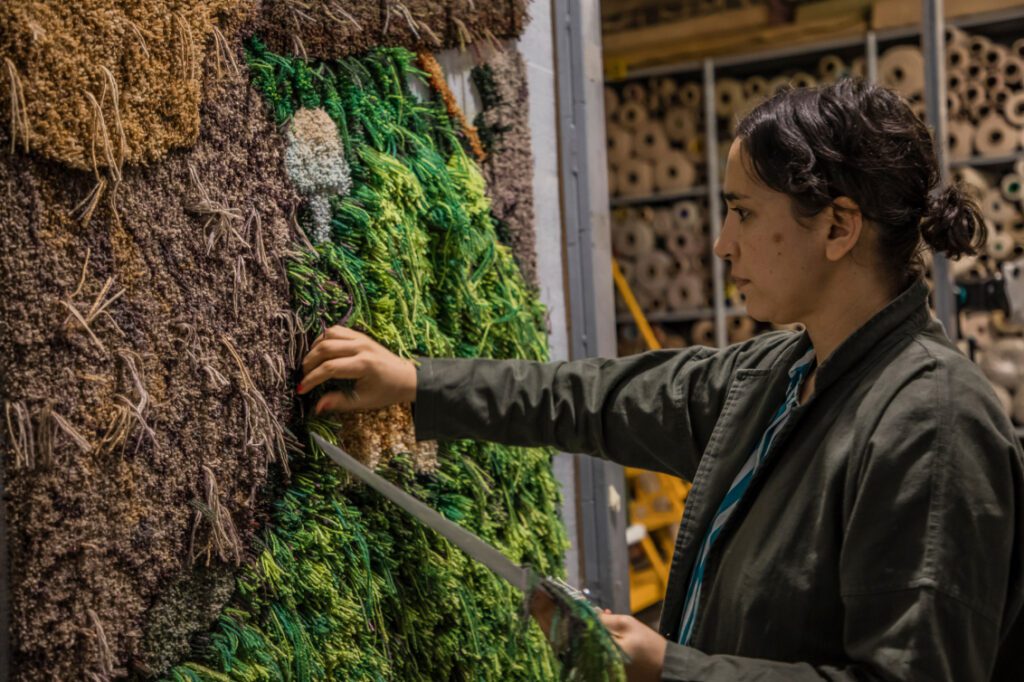
CARPETS CAN BE A REFUGE, BUT HERE THEY CAN PORTRAY DESTRUCTION IN A DIFFERENT WAY. THEY REPRESENT A FABRICATED BIOME, A METAPHOR TO THE MAN-MADE WORLD IN WHICH WE LIVE.”
Armed with a tufting machine, scissors, and a wildly expansive mind, Alexandra Kehayoglou creates lush, woolen terrains out of her Buenos Aires studio. Fiber is transformed into rivers, rocks, dense green foliage. There is a monumentality to Kehayoglou’s works, which often hang from walls and ceilings, sometimes inviting the viewer to remove shoes, or to lie down and bask in the feel of fibers, as if wading in a river, meadow, or field. Kehayoglou describes her work as “a fabricated biome, a metaphor for the man-made world in which we live,” and diving into their simulated terrain imbues us with sensation while inviting us to contemplate the authenticity of place.
As Kehayoglou constructs her landscapes, she allows the work to evolve over “the time they deserve to be produced,” as if she is tending or cultivating actual land. Fibers and threads are shaped and sheared like a manicured garden. Kehayoglou also carefully considers each material in her carpets, sourcing deadstock yarns from her family’s textile factory as a way to minimize waste. These choices collectively amount to a form of earth activism, her one-off sculptures made of upcycled textile waste standing in defiance of mass production. While decadent and celebratory of craft, Kehayoglou’s works describe environments that are being altered as a result of human interruption and climate change. The artist recognizes how these works can simultaneously comfort and unnerve.
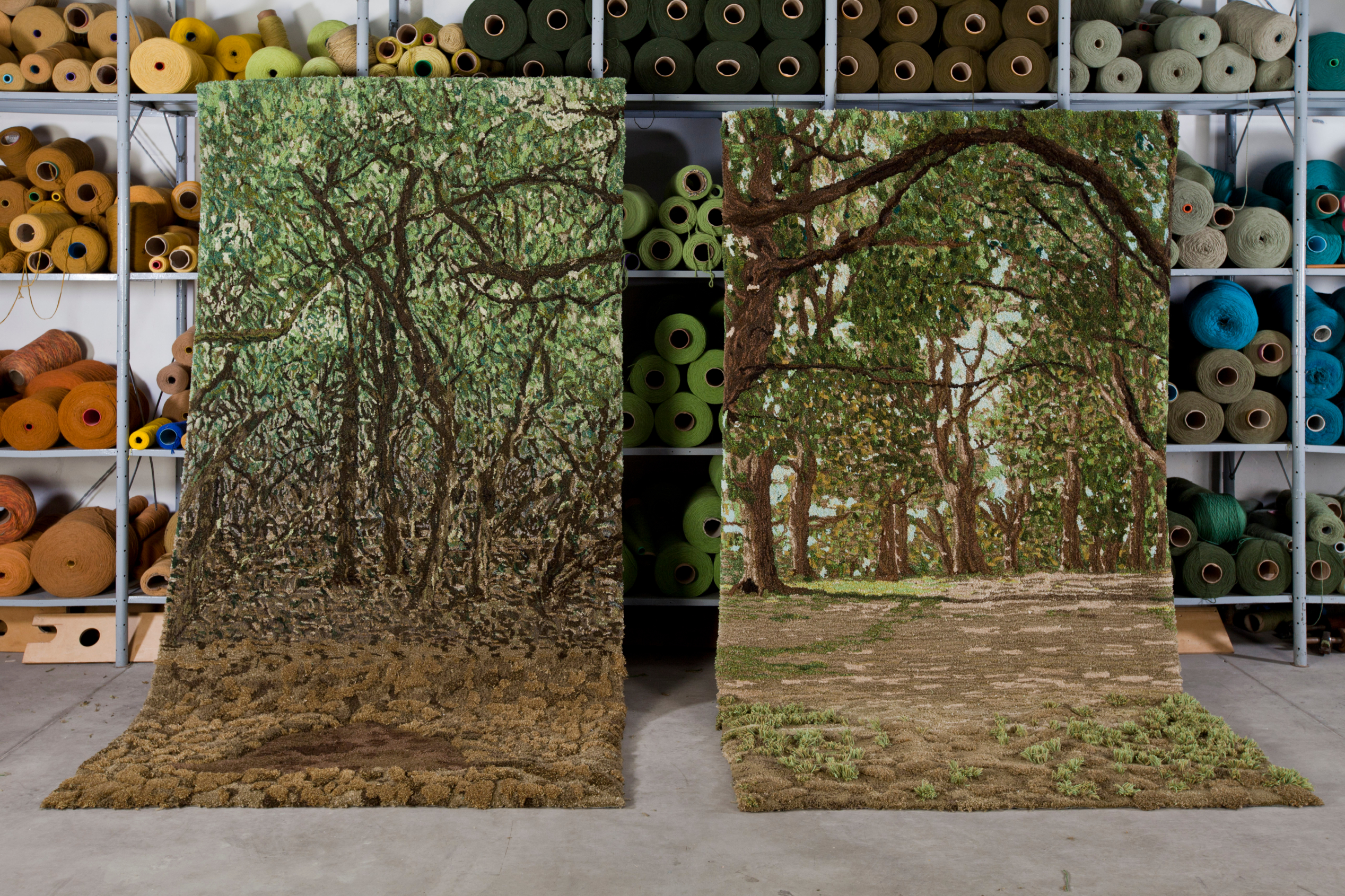
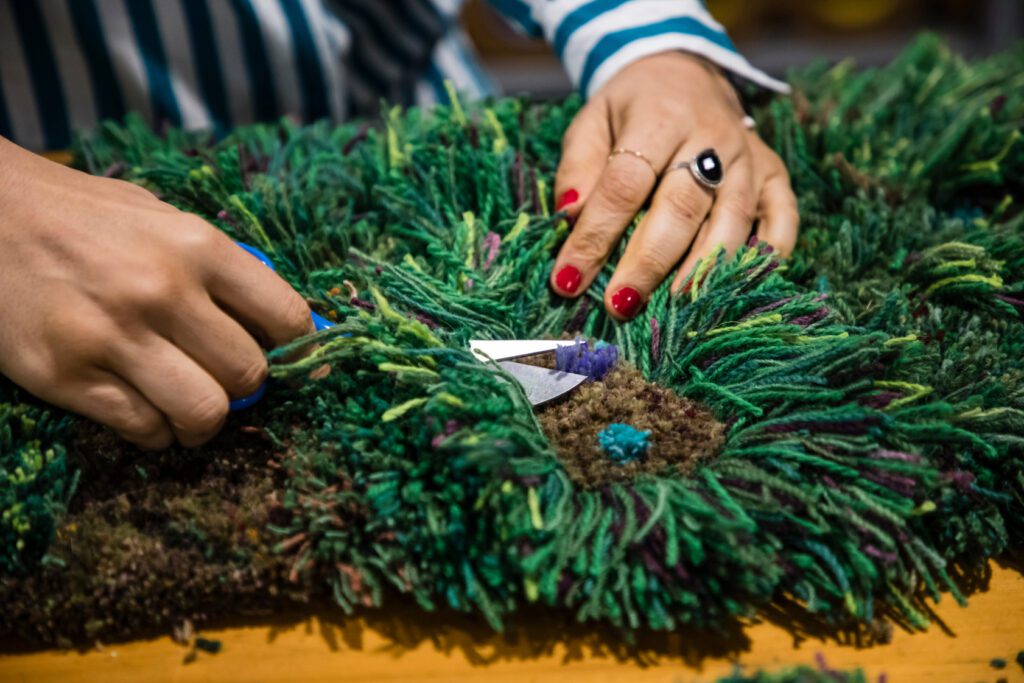
KEHAYOGLOU CONSTRUCTS HER LANDSCAPES … AS IF SHE IS TENDING OR CULTIVATING ACTUAL LAND. FIBERS AND THREADS ARE SHAPED AND SHEARED LIKE A MANICURED GARDEN.
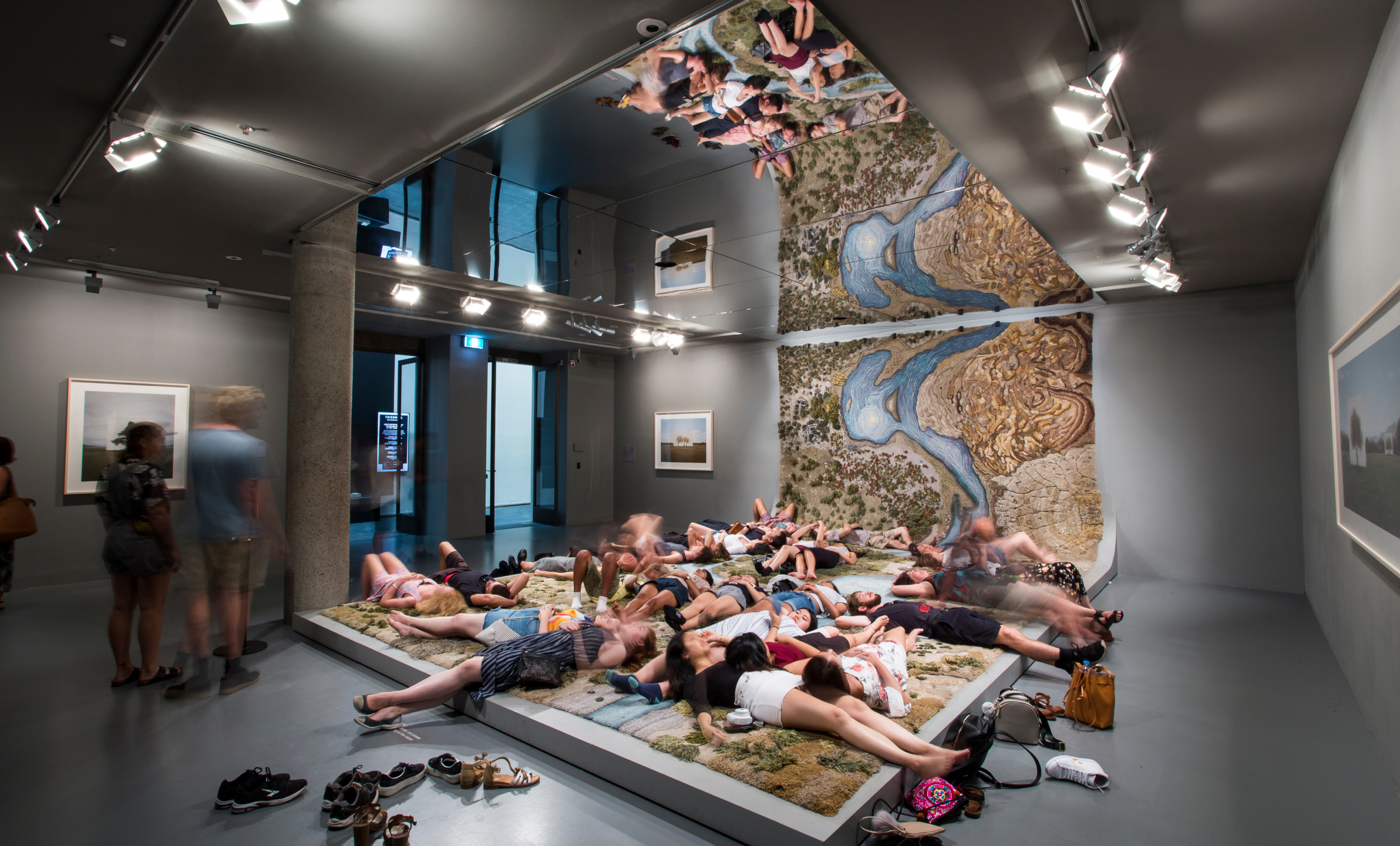
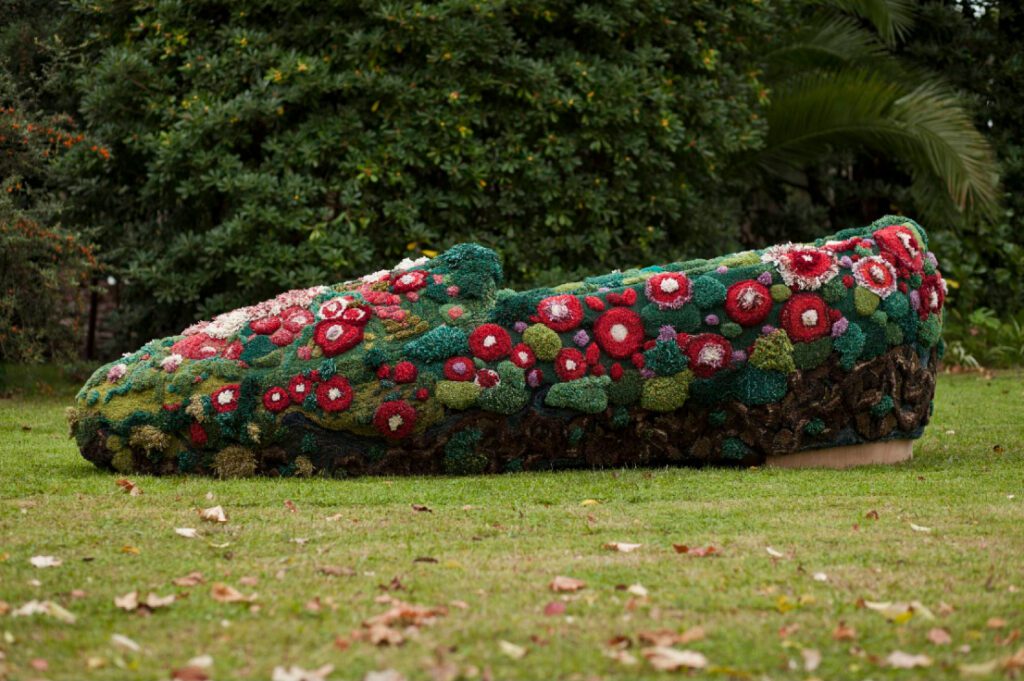
These manufactured landscapes hold intimate memory and meaning for the artist. Her father has his own carpet factory in Argentina, and his mother before him had a weaving practice back in Sparta, Greece. When Kehayoglou’s grandmother fled Greece for South America, she crossed the ocean into the unknown with but one possession: her loom. Elpiniki, a large, externally carpeted boat that Kehayoglou made in 2014, pays homage to her grandmother’s crossing. Formed in the shape of a giant shoe, the sculpture is based on a pair of carpeted shoes that her grandmother wore on her wedding day. Kehayoglou incorporated roses into the design, as documented in the original pair and in gentle homage to the town where her grandmother was born. Roses and carpets were what the town was famous for.
Recently Kehayoglou floated down the Paraná river in the massive shoe-boat, transforming the sculpture into an important part of a ritualistic performance. The act of being transported in the boat both acknowledges her grandmother’s long ocean journey, and connects her practice back to the earth, submerged in and transformed by landscape.
To learn more about the work of Alexandra Kehayoglou visit alexandrakehayoglou.com
